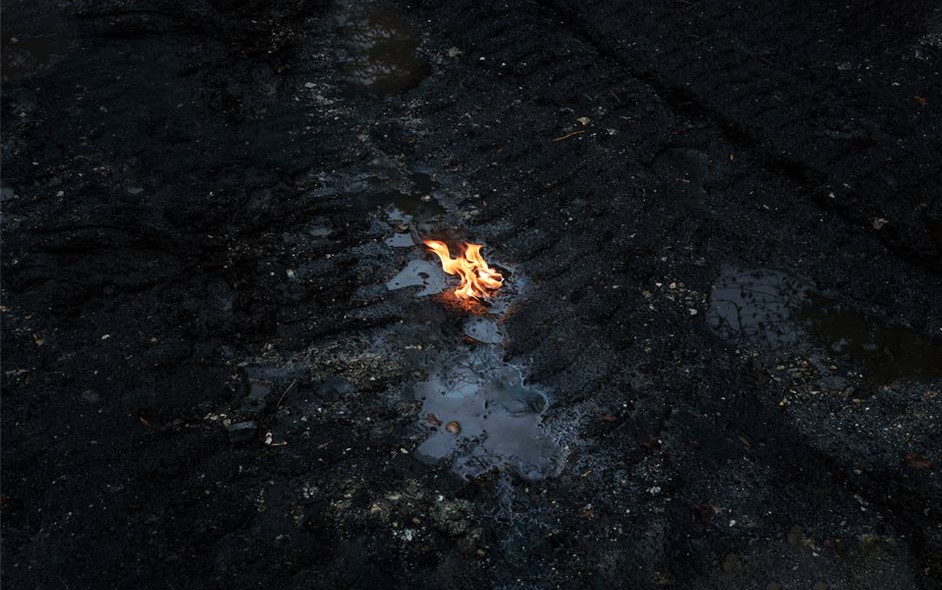MATTHIEU GAFSOU
SOLASTALGIE
Matthieu Gafsou is a French-Swiss photographer, born in 1981. After a master’s degree in philosophy, literature, and cinema at the University of Lausanne, he studied photography at the School of Applied Arts in Vevey. En 2009, he received the prestigious “HSBC Foundation Prize for Photography” and in 2010, he was invited to the group exhibition ReGeeneration2 at the Musée de l’Elysée with the Aperture Foundation. In 2014, his work Only God Can Judge Me was displayed at the Musée de l’Elysée in Lausanne.
His photographic series has been the subject of five monographs and numerous publications. In parallel to his artistic practice, he teaches at the University of Art and Design in Lausanne (ECAL). In 2018, his latest project, H+ was the subject of a major monographic exhibition at the Rencontres de la photographie in Arles. He lives and works in Lausanne, Switzerland.
Future has become a worrying horizon. This is the starting point of this project: the transformation that has taken place in my relationship to the world, in which the sere vision of the future is crumbling, the anxiety no longer appears as a revelation of my intimate flaws by as a threat to the “extime” – the territory, the world, what surrounds me and seemed unchanging… Rather than limiting my project to a factual enumeration of the causes of this crisis (pollution, global warming, social and migratory crises, financial crises, etc.), and rather than invoking only major concepts, such as the Anthropocene, for example, I have chosen to introduce as a theme the intimate dimension of this horizon. How am I affected by this prospect and above all, how does it, already, have an influence on my daily life by discrete touches? To this end, I decided to initiate a fragmented, complex visual language, which at the same time shows certain factual aspects (the snow that melts in February in the Alps, for example) and others that are intimate or close to my daily life (my family, etc.). But it seemed essential to me to integrate a philosophical dimension into this project, to question our relationship to what surrounds us and to try to introduce the theme of the violence of our relation to our environment. This is why I try to make images that bear witness of a different relationship to the environment (because the landscape in its artistic form often refers to an idealized form of the territory that I try to question). Finally, some of the more ambiguous photographs recall my own contradictions and literally depict how I am using the resources around me in a violent way. This project is therefore made up of a core of documentary photographs regularly balanced by more allegorical images that allow the representation to be shifted towards philosophical and personal dimensions. It is about making scientific questions more intimate, undertaking a shift towards the sensitive world and participating in a concert of voices that from my point of view, is necessary. I would link to thank the CNRS laboratories that helped me carry out this project, in particular the Evolution and Biological Diversity laboratory, the National Centre for Meteorological research, and the French instrumented Aircraft Service for Environmental Research.
Matthieu Gafsou

